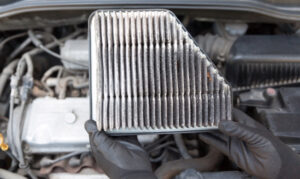A car battery is an essential component of a vehicle’s electrical system. It stores and provides electrical energy to power the car’s starter motor and other electrical components when the engine is not running. Without a battery, a car would not be able to start. In this article, we will explore the different types of car batteries, their applications, how to use them, and some important precautions to take.
Purpose
The main purpose of a car battery is to provide electrical energy to start the engine and power the car’s electrical system when the engine is not running. The battery also acts as a stabilizer for the electrical system, smoothing out any fluctuations in the alternator’s output.
Importance
A car battery is an essential component of a vehicle, and it is crucial to have a properly functioning battery for the car to start and run properly. A dead battery can leave you stranded on the side of the road, so it is important to have a good understanding of how to use and maintain your car battery. A battery that is not properly maintained can also cause damage to other parts of the electrical system.
Benefits
One of the main benefits of a car battery is that it allows you to start your car when the engine is not running. This means that you can use your car even if it has been sitting idle for a long period of time. Additionally, a properly functioning battery will help to prolong the life of the electrical system in your car.
How to use
Using a car battery is straightforward, but there are a few important things to keep in mind. Firstly, it is important to make sure the battery is securely fastened in the vehicle. Loose batteries can move around and cause damage. Secondly, it is important to keep the terminals clean. Dirty terminals can prevent the battery from charging properly. You can clean the terminals with a wire brush or baking soda and water. Finally, it is important to keep the battery charged. A battery that is not charged can become damaged or will not start the car.
Precautions
There are a few precautions to keep in mind when working with car batteries. Firstly, it is important to wear protective gear, such as gloves and eye protection, when working with batteries as they contain lead and other harmful chemicals. Secondly, it is important to be aware of the dangers of hydrogen gas. Batteries produce hydrogen gas as they charge, and this gas is highly flammable. It is important to work in a well-ventilated area and to keep sparks and open flames away from the battery.
Invented
The history of car batteries goes back to the 1820s when the first batteries were invented. The first batteries were lead-acid batteries, which are still in use today. Over the years, various types of batteries have been developed, including nickel-cadmium batteries and lithium-ion batteries.
Other Types
The most common type of car battery is the lead-acid battery. This type of battery has been used in cars for over a century. Lead-acid batteries are made up of lead plates immersed in an electrolyte solution. They are durable, inexpensive and have a long service life. Other types of car batteries include nickel-cadmium batteries and lithium-ion batteries. Nickel-cadmium batteries are less commonly used in cars, but they have a longer service life than lead-acid batteries. Lithium-ion batteries are becoming more popular in cars, but they are currently more expensive than lead-acid batteries. They are much lighter than the lead-acid batteries and have a longer life-span and a better power-to-weight ratio.
In conclusion, understanding the type of car battery that is in your car and how to properly use and maintain it is crucial for the longevity and performance of your vehicle. Properly maintained batteries provide reliable starting power, help prolong the life of the electrical system and make sure you’re not stranded on the side of the road. While lead-acid batteries are the most common type in use, it’s important to be aware of other types such as nickel-cadmium and lithium-ion batteries and their applications. Remember to always take safety precautions when working with batteries, such as wearing protective gear and working in a well-ventilated area. Regularly checking your battery, keeping it clean and charged will help ensure that your car is always ready to go when you are.










